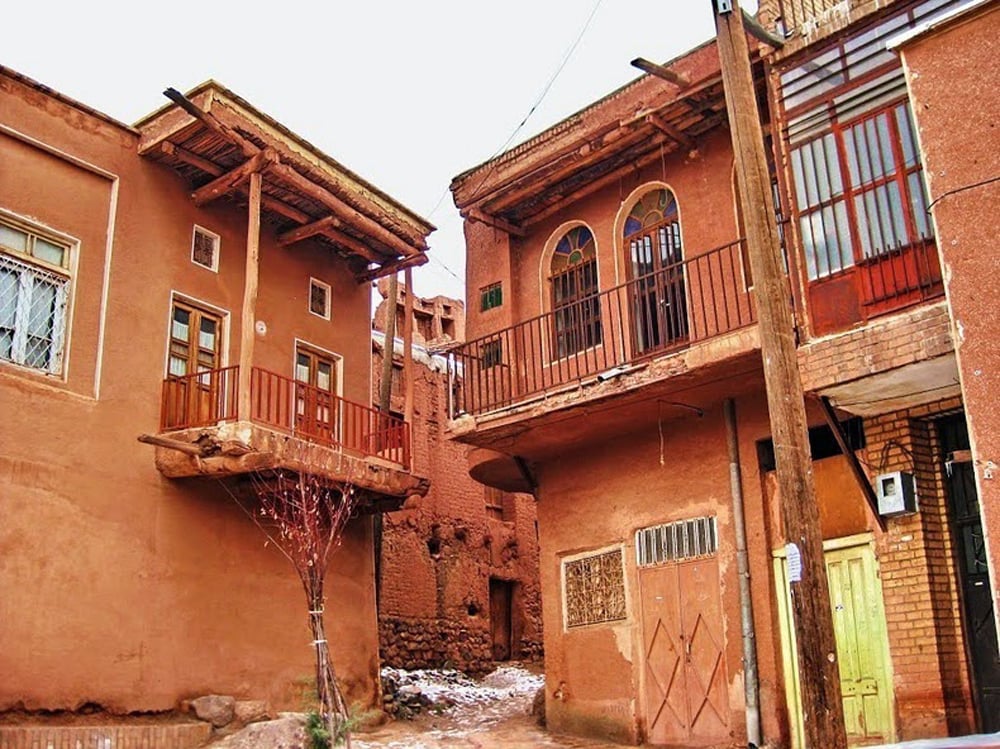The women's traditional costume, consisting of a scarf with floral motifs and pleated pants, is particularly attractive.Even today their costume, way of life and ancient dialect are still practically unchanged and for many anthropologists a reason to travel to Iran.
The architectural facet in this village along with the rituals and apparel of its inhabitants is a sight to witness.

The grand mosque of the village with its historical wooden altar dates to 1355 CE, and its wooden pulpit dating to 1045 CE. And an inscription in the 'Kofi' script is greatly valued both as a historical and religious monument.
Abyaneh is a beautiful historic village at the foot of Karkass mountain 70 km to the southeast of Kashan and 40 km to Natanz.This ia a village of living traditions, architectural styles (all in red clay), and probably the most interesting example of human adaptation to nature, wherein one can transcend the boundaries of time and space and experience the ancient civilization and culture of Iran.This ia a village of living traditions, architectural styles (all in red clay), and probably the most interesting example of human adaptation to nature, wherein one can transcend the boundaries of time and space and experience the ancient civilization and culture of Iran.The village is compact, with narrow and sloped as if placed on a stairway .Here, the roofs of some houses are used to serve as the courtyard for other houses higher up on the slope .The language spoken by the liberate people of
Abyaneh is Parthian Pahlavi. They are deeply committed to honoring their traditions. No matter how well- educated a person from Abyaneh might be. He or she puts on the traditional Abyaneh costume on coming back of the village from anywhere in Iran. The women’s Traditional costume consisting of a scarf with floral motifs and pleated pants. Is particularly attractive. The Abyaneh woman is inseparably attached to her wedding gown inherited from her mother, and is expected to pass it on to her daughter. It bears such an intrinsic value for her that the wouldn’t sell it at any price.There are a good number of old houses in Abyaneh, among them the homes of Gholam Nader Shah and Nayeb Hossein Kashi. In addition to the
Zoroastrian fire temple (from the Sassanian period) in the village, there are three castles, a pilgrimage site, there mosques named Hajatgah. Porzaleh, and Jam’e, all worth a careful visit. Altogether there are eight mosques in the village.The Hajatgah mosque, built next to a rock, dates from the early Safavid period, according to an inscription on top of its door. Inside the mosque there is a beautiful nocturnal prayer hall with wooden capital pillars.Porzaleh mosque, built during the Ilkhanid reign in the oldest part of the village, has a very vast nocturnal prayer ha;. The ornamentation used here look very much like those of the tomb of Bayazid of Bastam, the great Persian mystic.The Lam’e Mosque of Abyaneh dates back to the eleventh century. There are a number of inscriptions and a manbar (pulpit) in the mosque. The interesting thing is that the pulpit has many features similar to the architectural elements and columns heads seen in Persepolis.
Tags:
International





